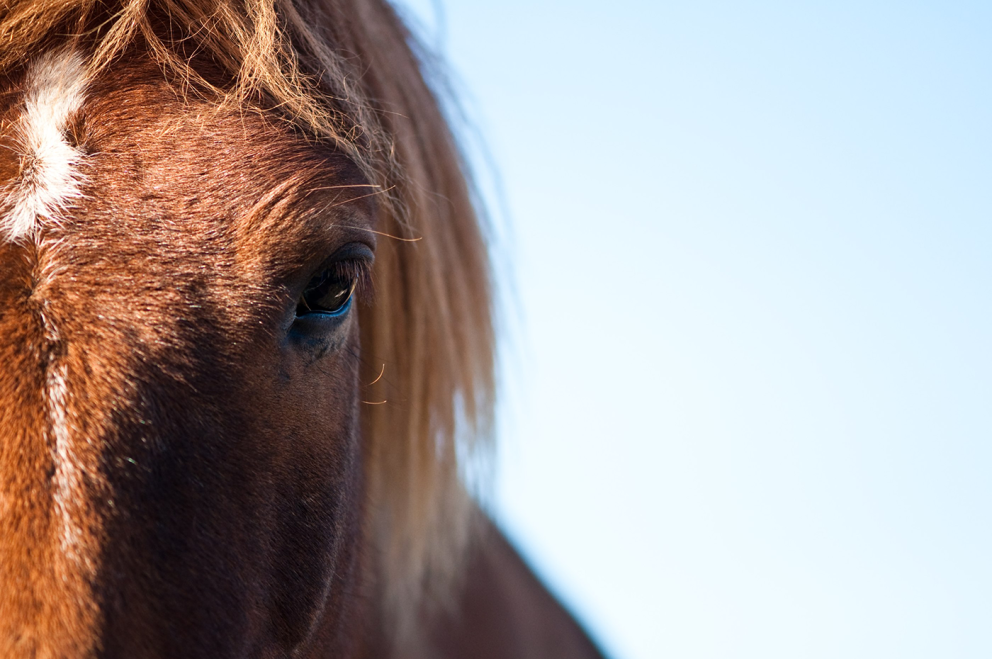You are here
Equine Emergency Preparedness

Alberta has faced various natural disasters and emergencies in recent years, including severe storms, blizzards, wildfires, and flooding, impacting many people and their animals.
It is essential that horse owners in Alberta are prepared for such natural disasters. Being prepared will help you protect your horses and overcome unexpected emergencies as safely as possible.
Creating an Emergency Plan
Preparing for emergencies is crucial for the safety and well-being of your horses. A comprehensive plan should include the following elements:
- Build a map. Outline the buildings on your property and include key services (power and water sources), access points, animal housing locations, equipment locations, and dangerous chemical storage. Post your map in each building.
- Set a meeting place or muster point in case an evacuation is ordered. Make sure everyone knows the locations and ensure that there is feed, water and shelter for any animals you can evacuate. Consider seasonal weather.
- Establish safe transportation methods. If possible, practice loading and transporting your animals during different times of day to get them comfortable with the routine.
- Identify in advance possible locations that can accommodate your animals if you have to move in an emergency
- Work with your local Director of Emergency Management to learn what type of help will be available in case of an emergency.
- Apply for a PID account (Link to Large Animal Identification Article) to help local authorities provide better protection for your animals during an emergency.
- Premises ID is mandatory under the Health of Animals Act in Alberta. Learn more at Alberta.ca
- Ensure proper animal identification, these systems allow for the quick location of an animal’s origin and its movement history. (Link to Large Animal Identification Article)
- Review and update your plan annually to ensure it remains relevant and effective.
Equine Emergency Kit
An emergency kit should include essential items to help you and your horses in case of an emergency.
Some essential items to include are:
Animal Emergency Supplies
- Water and food for at least three days
- Water buckets and hay nets
- First aid kit with supplies for equine first aid
- Blankets for warmth and comfort
- Medications and supplements for your horses' specific needs
- Important documents such as a list of medications, veterinary records, animal identification info, insurance, health and sale records and proof of ownership
- Handling equipment, for example: lead ropes, halters for all horses
- Tools such as fence cutters, pocket knife
Household Supplies
- Flashlights and batteries for lighting
- Radio and/or cell phone for communication
- Cash and/or credit cards for emergency expenses
- Personal protective equipment like gloves and masks
- Emergency contact information for your veterinarian and other essential contacts
Remember to check your kit regularly to ensure all items are up-to-date and not expired.
Be Prepared
It’s important to create an Equine Emergency Preparedness Plan. Be adaptable and prepared to adjust your plans based on the circumstances. By taking the time to and investing in detailed and comprehensive plan, you can be ready for the unexpected and keep your horses safe.
Sources and Further Reading
- Premises Identification Program | Alberta.ca
- First Aid Kit Contents - University of Guelph
- Farm animals and livestock preparedness | Alberta.ca
- Livestock Emergency Preparedness | Alberta Animal Health Source
- The Importance of Large Animal Identification - Traceability and Emergency Preparedness
- Alberta Emergency Management Agency - https://www.alberta.ca/alberta-emergency-management-agency
- Horses in Distress – Welfare of Horses | Equine Health & Welfare | Resources | Alberta Equestrian Federation
- Emergency Preparedness | Equine Health & Welfare | Resources | Alberta Equestrian Federation
